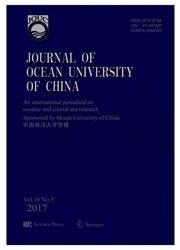

 中文摘要:
中文摘要:
贫毛类环虫在在 benthic 食物网以及在红树属植物沼泽地的滋养的骑车和精力流动起一个重要作用。然而,他们一直不是当广泛地作为象 polychaetes,腹足动物,瓣鳃类,和甲壳纲的动物那样的另外的 macrofaunal 组学习了。在假设下面,那贫毛类环虫密度和生物资源在中国的副热带的红树属植物沼泽地服从特定的地理分发模式,我们在 Quanzhou 海湾, Zhangjiang 河口和 Gaoqiao 红树属植物的 Luoyang 河口调查了这二个参数沼泽地。在贫毛类环虫密度的一个地理坡度在 Aegiceras corniculatum 和 Kandelia obovata 产地是在场的,它由此从更低的纬度减少了到更高的纬度。进一步,贫毛类环虫分发上的 ANOVA 测试表明贫毛类环虫密度和生物资源被区域,季节和区域显著地影响吗?
 英文摘要:
英文摘要:
Oligochaetes play an important role in nutrient cycling and energy flow in benthic food webs as well as in mangrove wetlands. However, they have not been as extensively studied as other macrofaunal groups such as polychaetes, gastropods, bivalves, and crustaceans. Under the assumption that oligochaete density and biomass obey specific geographical distribution patterns in subtropical mangrove wetlands of China, we investigated these two parameters in the Luoyang Estuary of Quanzhou Bay, Zhangjiang Estuary and Gaoqiao mangrove wetlands. A geographical gradient in oligochaete density was present in Aegiceras corniculatum and Kandelia obovata habitats, whereby it decreased from lower latitudes to higher latitudes. Further, ANOVA tests on oligochaete distribution revealed that both oligochaete density and biomass were significantly influenced by region, season and region × season at the A. corniculatum and K. obovata habitats. The annual average oligochaete density and biomass at the A. corniculatum habitat were higher than that at the K. obovata habitat, in both the Luoyang and Zhangjiang estuaries. There were significant correlations between oligochaete density and biomass and sediment particle size parameters, confirming that sand, silt, and clay contents were the key environmental factors affecting oligochaete distribution.
 同期刊论文项目
同期刊论文项目
 同项目期刊论文
同项目期刊论文
 期刊信息
期刊信息
